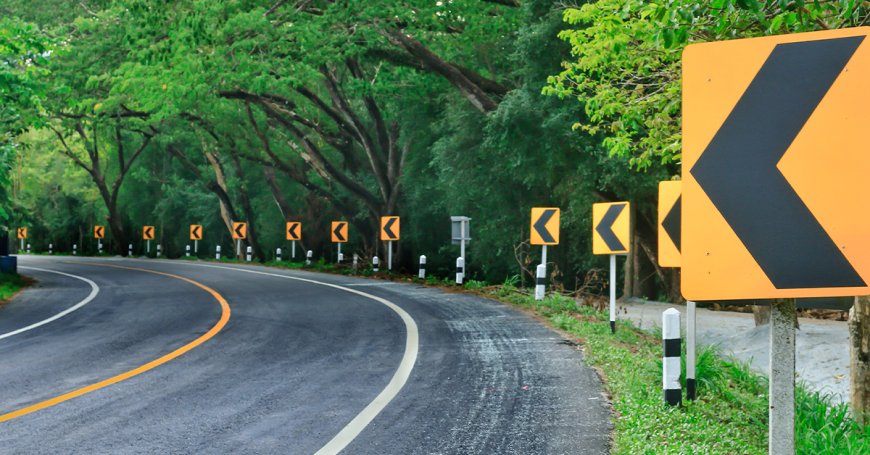Why Road Safety Should Be Everyone's Responsibility
Every 24 seconds, someone dies in a traffic crash worldwide. That's not just a statistic, it's a stark reminder that road safety isn't someone else's problem. It's yours, mine, and everyone's who shares the road.

Road traffic accidents continue to be a significant issue in Pakistan, with thousands of lives lost or altered due to poor driving habits, infrastructure shortcomings, and lack of awareness. According to the latest data, Pakistan sees over 11,000 fatalities annually, with motorbikes and cars accounting for the highest number of fatalities. As of 2023, the annual road traffic fatalities stood at approximately 11,000, with motorcycles and cars contributing to nearly 70% of the total accidents.
In this article, we will delve deeper into the state of road safety in Pakistan in 2025, providing practical checklists for drivers, reviewing the local regulations, sharing accident data, and offering solutions to tackle the growing issue of road fatalities.
Road Accident Data in Pakistan (2023)
Understanding the problem requires a clear view of the statistics. According to the Pakistan Bureau of Statistics, the number of road accidents in Pakistan for the year 2023 were staggering:
-
Total Road Accidents: 9,391
-
Fatal Road Accidents: 4,898
-
Injuries: 5,902
-
Total Casualties: 14,415
These figures are alarming and highlight the need for improved road safety initiatives and stricter law enforcement. The majority of accidents are caused by human error, including speeding, distracted driving, and failure to use safety gear like helmets and seatbelts.
While the government has made progress in improving road infrastructure, there remains a pressing need for better law enforcement, public awareness, and the integration of smart technologies to help prevent accidents.
Common Causes of Accidents in Pakistan
Several factors contribute to the high accident rates on Pakistani roads:
-
Overspeeding
-
Overspeeding remains one of the leading causes of accidents. Many drivers exceed the speed limits, particularly on highways, which increases the risk of crashes, especially in areas with poor road conditions.
-
-
Distracted Driving
-
Mobile phone use while driving is widespread in Pakistan. The temptation to text or check social media while on the road is a significant risk factor. According to the National Traffic Regulation Authority (NTRA), distracted driving is responsible for over 30% of all road traffic accidents.
-
-
Lack of Safety Gear
-
Despite various safety campaigns, a significant number of drivers and passengers do not wear seatbelts or helmets. In particular, motorcyclists are more vulnerable in accidents due to the absence of proper protective gear.
-
-
Poor Road Infrastructure
-
Inadequate road maintenance, lack of proper signage, and poorly lit roads at night are common in many parts of Pakistan. Such conditions contribute to a higher number of accidents, particularly in rural areas where infrastructure is less developed.
-
-
Reckless Driving
-
Reckless driving behaviors such as lane cutting, tailgating, and not yielding at intersections contribute to the high accident rate. Aggressive driving is particularly common during rush hours and on busy urban roads.
-
Road Safety Checklist for Drivers in Pakistan (2025)
To combat these issues and make driving safer for everyone, here’s a comprehensive checklist that every driver in Pakistan should follow:
Before You Start Driving:
-
Vehicle Inspection:
-
Check tire pressure and tread depth.
-
Test your brakes to ensure they are functioning properly.
-
Check lights, indicators, and wipers to ensure they are working.
-
Adjust mirrors for optimal visibility.
-
-
Documentation:
-
Ensure you have your driver’s license, vehicle registration, and insurance documents with you.
-
Make sure your road tax and any other applicable fees are up to date.
-
-
Safety Gear:
-
Always wear your seatbelt and ensure all passengers do the same.
-
For motorcyclists, always wear a helmet.
-
Ensure that children are seated in the correct car seat or booster.
-
While Driving:
-
Adhere to Speed Limits:
-
Stick to posted speed limits, and slow down in poor weather conditions or heavy traffic.
-
Adjust speed based on the road, weather, and traffic conditions.
-
-
Avoid Distractions:
-
Do not use mobile phones or other electronic devices while driving.
-
Set your GPS and music before starting your journey.
-
-
Use Indicators:
-
Always use your indicators when changing lanes or turning to avoid confusion and collisions.
-
-
Maintain a Safe Distance:
-
Keep a safe distance between your car and the one in front of you, especially on highways and during traffic.
-
-
Follow Traffic Signs:
-
Obey all traffic signs and signals to avoid accidents.
-
After Driving:
-
Proper Parking:
-
Always park your vehicle in designated areas.
-
Avoid double parking and obstructing traffic.
-
-
Lock Your Vehicle:
-
Lock your car and ensure all windows are up when you leave.
-
Local Traffic Regulations in Pakistan (2025)
Pakistan has implemented several changes in its traffic laws to improve road safety. Some of the key regulations include:
Increased Fines for Violations:
Fines for overspeeding, not wearing helmets, using mobile phones while driving, and other offenses have been significantly increased to deter violations. The fines for dangerous driving, reckless driving, and driving without a seatbelt have been raised as part of the 2025 road safety initiatives.
Mandatory Vehicle Safety Features:
All new vehicles are now required to meet a set of 57 safety standards, including airbags, anti-lock braking systems (ABS), and rearview cameras.
Driver Training Programs:
The government has introduced mandatory professional driver certification programs to reduce human error. These programs aim to ensure that all drivers are well-trained in road safety and traffic laws.
Provincial Road Safety Initiatives
Different provinces in Pakistan have been taking steps to address road safety concerns:
Punjab:
The Punjab Road Safety Authority (PRSA) has implemented various awareness campaigns and invested in road infrastructure improvements to reduce accidents. These initiatives focus on better road maintenance and ensuring that drivers follow the new traffic rules.
Sindh:
Karachi, the largest city in Sindh, has witnessed over 1,400 fatalities due to road accidents in 2023 alone. In response, local authorities have introduced stricter traffic enforcement measures and have collaborated with international organizations to implement better traffic management strategies.
Khyber Pakhtunkhwa:
In Khyber Pakhtunkhwa, authorities have focused on educating drivers and improving road signage to reduce accidents. Additionally, the region is seeing improvements in road infrastructure, which will enhance safety for drivers.
Raising Awareness and Education
Education plays a pivotal role in improving road safety. Efforts have been made to raise awareness about the importance of following traffic rules and driving safely:
-
School Programs: Programs like "Safe Travel, Safe Pakistan" are being implemented to teach school children about road safety and the importance of following traffic laws. This initiative is an essential step in developing a safety-conscious generation.
-
Media Campaigns: Television and radio ads, as well as social media posts, are being used to educate the public about road safety. These campaigns focus on issues such as wearing helmets, seatbelts, and reducing speeding.
-
Community Engagement: Community-based programs encourage citizens to participate in road safety workshops, helping to spread awareness and reduce accidents.
Future Outlook for Road Safety in Pakistan
While road safety in Pakistan remains a significant challenge, there are optimistic signs for the future:
-
Declining Fatalities: Traffic accidents in Pakistan decreased by 33% in 2024 compared to the previous year, indicating that safety initiatives are beginning to take effect.
-
Infrastructure Improvements: Ongoing investments in road infrastructure are expected to improve overall safety standards on Pakistan's roads.
-
Technological Integration: With the adoption of smart traffic management systems and enhanced vehicle safety features, the rate of accidents is expected to decrease further. These systems use sensors, cameras, and AI to monitor traffic and reduce human errors.
Conclusion
Road safety is a pressing issue in Pakistan, but through collective efforts from the government, law enforcement agencies, and the general public, we can work towards a safer driving environment. By following traffic regulations, educating ourselves about road safety, and adopting smart technologies, we can reduce road accidents and create a safer road network for everyone.
With improved law enforcement, better infrastructure, and consistent public education, Pakistan can tackle the growing issue of road fatalities and create a safer future for its citizens.

 Ayesha Mir
Ayesha Mir